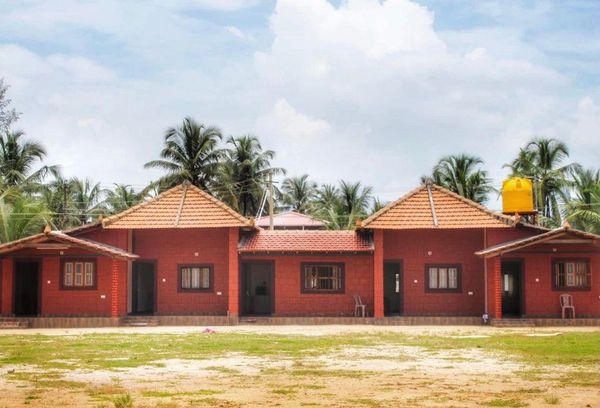Contract vs. Full-Time Employees - Which Is Right for Your Business
 Thomas Coley
03 Mar, 2025
11 mins read
46
Thomas Coley
03 Mar, 2025
11 mins read
46

Choosing a perfect worker is a big decision for any business. During the hiring process, asking the right executive interview questions is one way a company can judge a candidate and build a strong team. However, it is crucial to identify business or project requirements so you know whether to invest in permanent or contract hiring.
This blog explains the differences between contract and full-time employees. It also shows the benefits and challenges of each choice.
Understanding the Types of Employees
A clear look at contract and full-time workers is important before any decision is made.
Contract Employees
Contract employees work for a set period or on a specific project. Their work ends when the contract does and are not on the payroll permanently. Some points about contract employees include:
• Defined Period: The work is done during a set time. It could be weeks/months/years depending on the contract.
• Project Based: The work is focused on a specific project.
• Flexible Hours: They may set their hours if the contract allows.
• No Long-Term Benefits: They often do not get health insurance, retirement plans, or paid leave.
Full-Time Employees
Full-time employees are hired to work for the long term. They are part of the daily operations of a company. They get a regular salary and benefits. Key aspects of full-time employees include:
• Permanent Position: They work on a long-term basis.
• Fixed Hours: They follow a set work schedule.
• Employee Benefits: They get benefits like health care, paid time off, and retirement plans.
• Stronger Company Ties: They are more connected to the company and its culture.
Making the Right Decision Between the Two Types of Hiring
There are certain factors that must be considered when choosing the right type of employee for a business.
Review Business Needs
Start by looking at what the firm wants.
• Short-Term vs. Long-Term: Identify if the work is temporary or ongoing.
• Skill Needs: Decide if specialized skills are needed for short bursts or continuous tasks.
• Budget Considerations: Check if the budget supports long-term hires or if a flexible approach is better.
• Training Needs: Think about whether the worker needs training or already has the skills.
Analyze the Workload
Consider how work will change over time.
• Seasonal Work: Determine if work levels change with the seasons.
• Project Peaks: Identify periods of high demand that may require extra hands.
• Growth Plans: Consider future projects and growth plans.
Study the Market
Research similar businesses and their choices.
• Industry Standards: Look at what similar companies do.
• Success Stories: Learn from examples of successful hiring strategies.
• Expert Advice: Read expert articles and guides to gain insight.
Create a Clear Hiring Plan
Plan the hiring process carefully.
• Job Descriptions: Write simple and clear job descriptions.
• Interview Process: Use a clear process to evaluate candidates.
• Decision Criteria: List the criteria that will guide the final decision.
Legal and Tax Implications
Legal aspects must be reviewed before making a hire.
• Employment Laws: Check the laws for hiring both types of workers.
• Contracts and Agreements: Ensure contracts are clear and meet legal standards.
• Tax Considerations: Understand how taxes affect each type of worker.
Tips for Effective Hiring Practices
Good hiring practices help in selecting the right workers and building a strong team.
Use Clear Interview Questions
Well-prepared questions make interviews easier.
• Basic Questions: Ask simple questions about skills and experience.
• Behavioral Questions: Use questions that reveal how a candidate handles work.
• Role-Specific Questions: Tailor questions to the job requirements.
Consider Using Structured Interviews
A structured process helps in comparing candidates.
• Same Questions: Ask all candidates the same questions.
• Score Responses: Use a scoring system to rate answers.
• Follow-up: Have a few follow-up questions to dig deeper if needed.
Look at Work Samples
Work samples can show real skills.
• Previous Projects: Ask for examples of past work.
• Skill Tests: Use tests to check the skills required.
• Portfolio Review: Review portfolios for creative roles.
Making the Final Decision
A clear decision can be made by comparing the needs with the strengths of each worker type. So, create a simple list to compare the options.
Contract Employees:
• Short-term and flexible
• Lower cost in benefits
• Specialized skills for projects
Full-Time Employees:
• Long-term stability
• Stronger team bonds
• Better fit for daily operations
Consider the Future
The choice should match both current needs and plans.
• Growth Plans: Consider how each worker type fits the long-term vision.
• Skill Development: Think about how skills will grow over time.
• Company Values: Ensure the hiring choice matches company culture and values.
Use Data to Support the Choice
Data can help in making a smart decision.
• Performance Metrics: Use past performance data to see what worked best.
• Budget Reviews: Check past costs against current projections.
• Market Trends: Look at trends in the industry regarding hiring practices.
Conclusion
The decision between contract and full-time employees depends on the nature of work and business needs. Clear comparisons show that each option has its benefits and challenges. Businesses must think about cost, stability, flexibility, and future growth when making a choice. Well-prepared final interview questions can give a brief review of candidate responses, ensuring that the right person fills the right role.
Written By:
Thomas Coley



Hotels at your convenience
Now choose your stay according to your preference. From finding a place for your dream destination or a mere weekend getaway to business accommodations or brief stay, we have got you covered. Explore hotels as per your mood.





